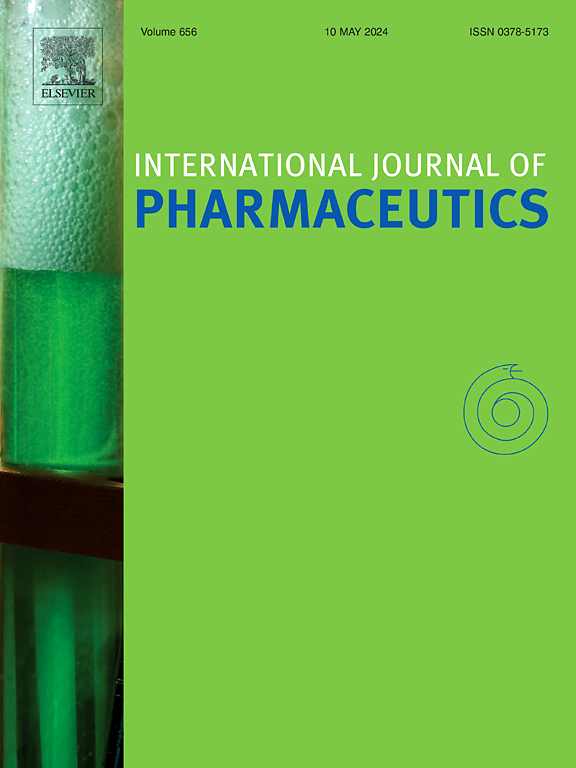片剂性质对光学孔隙度测定性能的影响
IF 5.3
2区 医学
Q1 PHARMACOLOGY & PHARMACY
引用次数: 0
摘要
药物片剂的孔隙率影响液体的运输、崩解和溶解,因此对其进行监测和控制对设计质量至关重要。光学孔隙度法是一种无损过程分析技术(PAT),它结合了气体散射介质吸收光谱(GASMAS)、光子飞行时间光谱(PToFS)、片剂厚度测量和片剂固体折射率。本文介绍了光学孔隙度法的基本原理,并通过实验设计对光学孔隙度法在片剂上的性能进行了研究。所研究的片剂具有相同的配方、固体折射率和直径,但孔隙率(~ 0.05和0.25)和厚度(1、3和5 mm)不同。确定了影响所研究片剂测定准确度和精密度的关键用户可控因素。这些是生产的片剂厚度,孔隙度,用户估计的固体折射率,以及光学孔隙度测量的数量,按重要性递减顺序排列。光学孔隙度法和标称孔隙度法测量的孔隙度比较表明,光学孔隙度法倾向于高估所研究片剂的孔隙度,特别是在低孔隙度时,并且具有更大的可变性。虽然光学孔隙度法作为一种无损且快速的实时释放测试方法具有优势,但用户需要了解片剂厚度、孔隙度和固体折射率估算的适当范围。本文章由计算机程序翻译,如有差异,请以英文原文为准。

Impact of pharmaceutical tablet properties on optical porosimetry performance
The porosity of a pharmaceutical tablet influences liquid transport, disintegration and dissolution, rendering its monitoring and control crucial for quality by design. Optical porosimetry, a non-destructive process analytical technology (PAT), combines gas in scattering media absorption spectroscopy (GASMAS), photon time-of-flight spectroscopy (PToFS), tablet thickness measurement and tablet solid refractive index. This article presents a short tutorial on optical porosimetry theory and a performance study of optical porosimetry on pharmaceutical tablets via design of experiments. The investigated tablets share the same formulation, solid refractive index and diameter but differ in porosity ( and 0.25) and thickness (1, 3 and 5 mm). Critical user-controllable factors impacting the measurement accuracy and precision of the investigated tablets were identified. These are the manufactured tablet thickness, porosity, the user-estimated solid refractive index, and the number of optical porosimetry measurements in decreasing order of significance. A comparison between tablet porosity measured by optical porosimetry and by nominal measurements revealed that optical porosimetry tends to overestimate the porosity of the investigated tablets, particularly at low porosities, and has greater variability. While optical porosimetry poses advantages as a non-destructive and rapid PAT for real-time release testing, users need to be aware of the appropriate range of tablet thickness, porosity and the solid refractive index estimate.
求助全文
通过发布文献求助,成功后即可免费获取论文全文。
去求助
来源期刊
CiteScore
10.70
自引率
8.60%
发文量
951
审稿时长
72 days
期刊介绍:
The International Journal of Pharmaceutics is the third most cited journal in the "Pharmacy & Pharmacology" category out of 366 journals, being the true home for pharmaceutical scientists concerned with the physical, chemical and biological properties of devices and delivery systems for drugs, vaccines and biologicals, including their design, manufacture and evaluation. This includes evaluation of the properties of drugs, excipients such as surfactants and polymers and novel materials. The journal has special sections on pharmaceutical nanotechnology and personalized medicines, and publishes research papers, reviews, commentaries and letters to the editor as well as special issues.

 求助内容:
求助内容: 应助结果提醒方式:
应助结果提醒方式:


